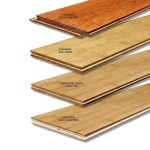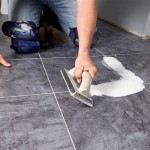How to Lay Vinyl Plank Flooring on Uneven Concrete Floors in Bathrooms
Installing vinyl plank flooring on uneven concrete floors in bathrooms can be a challenging task, but it is achievable with careful preparation and the right techniques. Here's a comprehensive guide to help you navigate this process successfully:
Step 1: Assessing the Unevenness
Start by evaluating the severity of the unevenness. Use a straightedge or level to determine the high and low points of the floor. If the variations are less than 1/8 inch, you can proceed with the installation using a self-leveling compound. For greater unevenness, you may need to consider leveling the floor with cement backer board or a leveling screed.
Step 2: Preparing the Floor
Clean the concrete floor thoroughly to remove any dirt, debris, or old adhesive. Repair any cracks or holes with a suitable patching compound. If necessary, etch the floor with an acid solution to enhance adhesion. Allow the floor to dry completely before proceeding.
Step 3: Installing the Underlayment
An underlayment layer provides cushioning, sound insulation, and moisture resistance. Choose an underlayment specifically designed for uneven floors and install it according to the manufacturer's instructions. Ensure that all seams are sealed properly to prevent moisture penetration.
Step 4: Applying the Leveling Compound (Optional)
If the unevenness exceeds 1/8 inch, a self-leveling compound is necessary to create a smooth and even surface. Mix the compound according to the manufacturer's instructions and pour it onto the prepared floor. Use a trowel to spread the compound evenly, working from one end of the room to the other. Allow the compound to cure completely before proceeding.
Step 5: Installing the Vinyl Planks
Begin by determining the starting point for the installation, typically the center of the room. Lay down the first plank and secure it with a few drops of adhesive. Continue adding planks in a staggered pattern, ensuring that the seams between them are tight and even. Use a tapping block and a rubber mallet to gently tap the planks into place.
Step 6: Cutting Around Obstacles
You will encounter obstacles such as toilets, sinks, and showers. To cut the planks around these obstacles, use a utility knife or a jigsaw. Measure and mark the areas to be cut and carefully make the cuts. Secure the cut planks with adhesive and make sure there are no gaps or overlaps.
Step 7: Trimming and Finishing
Once all the planks are installed, trim any excess material around the edges of the room using a utility knife. Install transition strips at doorways or where the vinyl flooring meets other flooring types. Caulk all seams and edges with a silicone-based caulk to seal them and prevent moisture penetration.
Tips for Success:
* Always refer to the manufacturer's instructions for specific products and installation techniques. * Use a level to check the floor regularly as you install the planks to ensure evenness. * Work in small sections to avoid overwhelming yourself and to maintain accuracy. * Allow the adhesive to cure completely before walking or placing heavy objects on the floor. * Clean and seal the floor regularly to maintain its appearance and prevent moisture damage.
10 Beginner Mistakes Installing Vinyl Plank Flooring

Vinyl Plank Flooring On Uneven Concrete

Vinyl Plank Flooring On Uneven Concrete

How To Install Luxury Vinyl Tile Over Concrete Floors Your Home Renewed

20 Tips For A Great Vinyl Plank Flooring Installation

How To Install Vinyl Plank Floors In A Bathroom Over Tile

How To Install Vinyl Plank Floors In A Bathroom Over Tile

Installing Vinyl Plank Flooring Lifeproof Waterproof Rigid Core Sustain My Craft Habit

How Can I Prepare Slightly Uneven Tiled Floor For Vinyl Planks Home Improvement Stack Exchange

Installing Vinyl Plank Flooring On Concrete Floor In Dallas Fort Worth Tx All American
See Also







